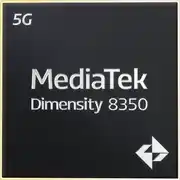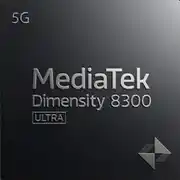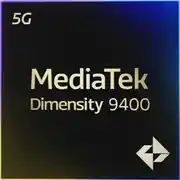Qualcomm Snapdragon 8s Gen 4

Qualcomm Snapdragon 8s Gen 4: Power and Innovation in Your Pocket
April 2025
Modern smartphones demand from processors not only speed but also the ability to balance performance, energy efficiency, and support for new technologies. The Qualcomm Snapdragon 8s Gen 4, unveiled in early 2025, is the answer to these challenges. In this article, we will explore what makes this chipset unique, how it handles real-world tasks, and who should pay attention to it.
1. Architecture and Technology Process: Engineering Excellence
The Snapdragon 8s Gen 4 is built on a 4nm technology process, ensuring high transistor density and improved energy efficiency. At its core is an octa-core CPU with a hybrid architecture:
- 1× Cortex-X4 (3.2 GHz) — a powerful core for resource-intensive tasks.
- 3× Cortex-A720 (2.8 GHz) — a balance between performance and power consumption.
- 4× Cortex-A520 (2.0 GHz) — energy-efficient cores for background processes.
The L2 cache has been increased to 2.75 MB, speeding up access to frequently used data.
GPU Adreno 825 — a true breakthrough. It supports ray tracing in mobile games, 4K output at 144 Hz, and works with VR/AR content. The Variable Rate Shading (VRS) technology optimizes the graphics load while maintaining detail in key areas of the screen.
2. Real-World Performance: From Gaming to AI
Gaming:
With Adreno 825 and support for API Vulkan 1.3, the Snapdragon 8s Gen 4 handles AAA games like Genshin Impact and Call of Duty: Mobile at maximum settings with ease. The average FPS in 4K mode is a steady 60 frames, and when the resolution is reduced to QHD, it can reach up to 120 FPS. The cooling system in smartphones powered by this chip (such as the Xiaomi 14 Pro) prevents throttling even after an hour of gaming.
Multimedia:
The chipset supports 8K@60fps video decoding and HDR10+. Smartphones equipped with it are perfect for streaming, editing in applications like Adobe Premiere Rush, and watching content in Dolby Vision.
AI Applications:
Artificial intelligence is a key feature of the Snapdragon 8s Gen 4. The Hexagon processor with TOPS 60 (tera operations per second) accelerates photo processing (for example, noise reduction in Night Mode), real-time speech recognition, and the operation of voice assistants.
Energy Consumption:
Thanks to the 4nm technology process and optimization of Android 15, smartphones with this processor demonstrate up to 8–9 hours of screen time (for example, OnePlus 12T). In power-saving mode, the CPU frequency is reduced to 1.5 GHz, extending battery life by 20–30%.
3. Built-in Modules: The Future of Connectivity
- Snapdragon X75 Modem: Supports 5G mmWave and Sub-6GHz with peak speeds of up to 10 Gbps. Compatible with 4G LTE Advanced Pro networks.
- Wi-Fi 7: Speeds up to 40 Gbps, reducing latency in online gaming (for example, down to 2 ms in Fortnite).
- Bluetooth 5.4: Simultaneous connections to headphones, smartwatches, and other gadgets without loss of quality.
- Satellite Communication: Emergency messaging via Iridium (similar to features in iPhone 15).
4. Comparison with Competitors: Who Are the Leaders?
- Snapdragon 8 Gen 3 (2023): The new chip is 15% faster in single-threaded tasks (Geekbench 6 Single Core: 2116 vs 1850) and 25% more efficient in multi-threading.
- Apple A17 Pro (2024): Better optimized for iOS (Geekbench 6 Single Core: 2250), but lags behind in GPU performance (+10% for Adreno 825).
- MediaTek Dimensity 9400 (2025): Comparable on AnTuTu (~2,200,000), but less suited for gaming due to a lack of optimizations from developers.
5. Use Scenarios: Who Is the Snapdragon 8s Gen 4 For?
- Gaming: Smartphones with active cooling (ASUS ROG Phone 8, starting at $999) and 165 Hz displays.
- Photography/Videography: Supports cameras up to 200 MP, recording 8K HDR, and AI stabilization. For instance, the Vivo X100 Pro+ with this chipset captures video at a level comparable to professional cameras.
- Everyday Tasks: Instant app launches, multitasking with 16 GB of RAM.
6. Pros and Cons of the Processor
Pros:
- Record performance in gaming and multimedia.
- Support for Wi-Fi 7 and satellite communication.
- Energy efficiency even under heavy loads.
Cons:
- High cost of devices (starting from $800).
- Requires advanced cooling systems for maximum performance.
7. Practical Tips: How to Choose a Smartphone?
- Cooling: Look for models with vapor chambers or liquid cooling (for example, RedMagic 9).
- Display: AMOLED with a refresh rate of 120–144 Hz for gaming and HDR10+ for video.
- Battery: An optimal choice is a 5000 mAh battery with support for fast charging of 100 watts or higher.
Devices on the Snapdragon 8s Gen 4 are flagships and gaming models. Among them stand out the Samsung Galaxy S25 Ultra ($1299), Xiaomi 14 Pro ($1099), and the more affordable Poco F6 Pro ($799).
8. Final Conclusion: Who Should Consider the Snapdragon 8s Gen 4?
This processor is the choice for those who:
- Value technology: Wi-Fi 7, 5G, and satellite communication of the future are already here.
- Demand the utmost from gaming and multimedia.
- Are ready to invest in a device for 3–4 years ahead.
The Snapdragon 8s Gen 4 not only maintains Qualcomm's leadership but sets new standards in the mobile industry, combining power, innovation, and versatility. If you are looking for a "no-compromise" smartphone, this chipset is your ideal companion.
Basic
3x 3 GHz – Cortex-A720
2x 2.8 GHz – Cortex-A720
2x 2.02 GHz – Cortex-A720
GPU Specifications
Connectivity
Memory Specifications
Miscellaneous
- AIFF
- CAF
- MP3
- MP4
- WAV
- H.265
- AV1
- VP9
Benchmarks
Phones with Snapdragon 8s Gen 4
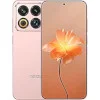



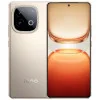

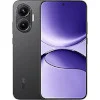
Comparison of Devices with Snapdragon 8s Gen 4
Compared to Other SoC
Related SoC Comparisons
Share in social media
Or Link To Us
<a href="https://cputronic.com/en/soc/qualcomm-snapdragon-8s-gen-4" target="_blank">Qualcomm Snapdragon 8s Gen 4</a>

